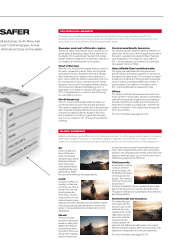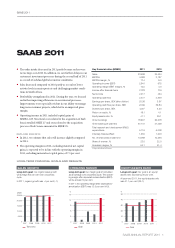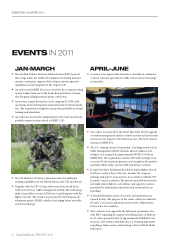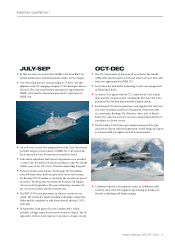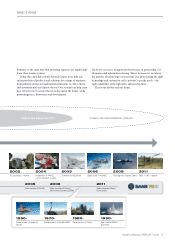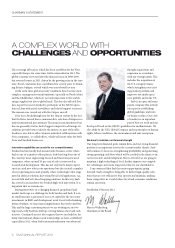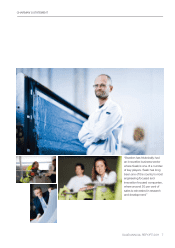Saab 2011 Annual Report Download - page 14
Download and view the complete annual report
Please find page 14 of the 2011 Saab annual report below. You can navigate through the pages in the report by either clicking on the pages listed below, or by using the keyword search tool below to find specific information within the annual report.
10 SAAB ANNUAL REPORT 2011
MARKET AND DRIVING FORCES
A CHANGING MARKET IS DRIVING
SAAB’S BUSINESS
Competition for resources and living standards is a strong
driver of social development and is clearly impacting de-
fence and security companies like Saab. Essentially, it is a
question of which products and services we will offer the
market and how we do it.
According to the UN’s World Population Clock, the global popula-
tion passed 7 billion on 31 October 2011. In recent years, Africa,
Asia and Latin America have seen the largest population gains and
economic growth, in contrast to the U.S. and Europe, where the
population growth and economic growth has been lower. Economic
growth is important to social development, and economic stability
and social stability are closely interlinked.
Competition for raw materials, resources and living standards is a
strong driver of social development. As society develops, competi-
tion increases for resources such as capital and people, which are
critical to drive innovation and growth.
e competitive picture has become more complex of late. e
old world order, where the North and West had the upper hand
over the South and East, no longer applies. While Western Europe
and North America are struggling with tough challenges and slow
economic growth, Africa, Latin America and Asia also face chal-
lenges, but are experiencing higher growth. When this competitive
dynamic changes, conict patterns change as well.
In addition, new economic centres are being created around the
world such as China, India and Brazil, which are growing in promi-
nence through a combination of population density, education and
vigorous growth, and are leading the way to a multipolar world.
The primary drivers in Saab’s markets are
threat scenarios and security needs. This
applies to the defence sector and civil so-
ciety as well as the grey zone in between.
Understanding the development of, and
overlap between, the two main dimen-
sions of security policy is critical to also
understanding the opportunities, breadth
and potential in Saab’s market.
One dimension of Saab’s markets focuses
on traditional security policy, the purpose
of which is to maintain national sover-
eignty by defending borders. Another
dimension stresses the vulnerability of civil
society, where supply chains and infra-
structure must be protected to safeguard
society’s essential functions.
The first dimension is dominated by national
governments and military organisations, while
the second is dominated by cities, compa-
nies, organisations and individuals. Urban
security, efficiencies and sustainability are
essential to a well-functioning society.
The three areas of training, command and
control, and maintenance are “links” as well
as the lowest common denominator be-
tween these two security dimensions. For
Saab, these areas originate in a traditional
border-protecting military context, but are
just as relevant and possible to implement
in an urban-centred, flow-protecting
environment.


